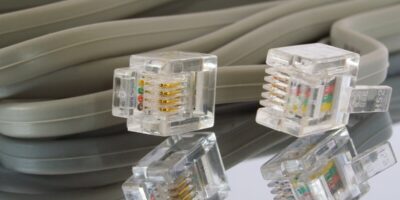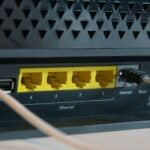A call center’s efficiency can make or break customer satisfaction. With constant interactions happening between customers and agents, any downtime or interruptions can quickly lead to frustration and a negative experience. For call centers that rely on Voice over Internet Protocol (VoIP) systems for communication, keeping downtime to a minimum is crucial. The solution to ensuring seamless operations? Monitoring your VoIP infrastructure carefully and proactively.

Effective VoIP monitoring gives IT teams the tools and insights needed to spot potential problems before they escalate into larger issues. By understanding the key aspects of call quality and system health, businesses can reduce downtime, improve overall efficiency, and ensure that their call centers are operating at their best.
1. The Critical Role of Uptime in Call Center Operations
Call centers handle high volumes of customer interactions daily. Any form of downtime—whether due to network outages, system failures, or poor call quality—can cause delays, missed calls, and ultimately, dissatisfied customers. In industries where customer satisfaction directly impacts a company’s reputation and revenue, minimizing downtime is essential.
VoIP systems, while offering flexibility and cost savings, are also susceptible to issues like network congestion, bandwidth shortages, and latency. These can all affect the uptime of a call center. Without consistent uptime, agents are left unable to perform their duties efficiently, leading to increased wait times for customers, lost opportunities, and a diminished overall experience.
This is where VoIP monitoring becomes an essential component of managing call center operations.
2. How VoIP Monitoring Prevents Network Congestion
Network congestion occurs when too many data packets attempt to use the same bandwidth at once. In a call center environment, this can easily happen when large numbers of calls are happening simultaneously, alongside other bandwidth-heavy applications. The result? Delayed or dropped calls and frustrated agents and customers.
VoIP monitoring allows businesses to track bandwidth usage in real-time, identifying areas of congestion before they become a problem. By analyzing patterns and peak traffic times, IT teams can take proactive measures such as allocating additional bandwidth or prioritizing VoIP traffic over other network activities. This helps prevent call disruptions and keeps operations running smoothly.
3. Reducing Latency for Clear Communication
Latency refers to the time it takes for voice data packets to travel from the speaker to the listener. In a busy call center, even small delays in communication can cause awkward pauses and disrupt the flow of a conversation. This can not only frustrate customers but also reduce the overall efficiency of an agent.
Monitoring latency through a VoIP system gives IT teams valuable insights into the network’s performance. If latency exceeds acceptable levels, it’s important to have professional assistance, such as an experienced managed IT services provider , who can deploy the right solutions. These may include adjusting network configurations, reducing the number of hops data packets take, or rerouting calls through less congested pathways. These small adjustments can drastically improve communication clarity and call quality, ensuring smooth and uninterrupted conversations.
4. VoIP Monitoring for Identifying Packet Loss
Packet loss is another critical issue that can lead to choppy, broken audio during calls. This happens when data packets are lost during transmission, meaning parts of the conversation never reach the receiver. In extreme cases, packet loss can cause complete call drops, leading to missed customer interactions and wasted time for agents.
Using VoIP monitoring tools, IT teams can detect instances of packet loss and investigate the cause, which might be related to hardware issues, poor Wi-Fi signal strength, or network overload. Once the root cause is identified, corrective actions can be taken—whether that involves upgrading network equipment, enhancing signal strength, or optimizing the network configuration to handle more data traffic.
5. Monitoring for Jitter to Ensure Consistent Call Quality
Jitter occurs when voice packets arrive at irregular intervals, causing distorted or garbled audio. In a call center where clear communication is essential, even minor jitter can lead to misunderstandings and frustrated customers. VoIP monitoring helps identify jitter by measuring the variance in packet arrival times, allowing IT teams to adjust jitter buffers and ensure a smoother flow of data.
Jitter buffers work by storing voice data temporarily and releasing it at a steady rate, preventing erratic audio from reaching the end user. By monitoring jitter levels consistently, call centers can maintain a high level of call quality, even during times of network instability.
6. Real-Time Alerts and Proactive Maintenance
One of the biggest advantages of modern VoIP monitoring tools is their ability to provide real-time alerts when issues arise. Whether it’s a sudden spike in latency, packet loss, or network congestion, these alerts allow IT teams to respond immediately and prevent problems from escalating.
Proactive maintenance is another key benefit of VoIP monitoring. By tracking system performance over time, IT teams can identify potential weak points and address them before they lead to downtime. This could involve upgrading outdated hardware, reconfiguring network settings, or expanding bandwidth to handle higher call volumes. Proactively maintaining a VoIP system is far more effective and less disruptive than reacting to issues as they occur.
Conclusion: Ensuring Efficiency Through Proactive VoIP Monitoring
For call centers, where customer service and satisfaction are top priorities, minimizing downtime is non-negotiable. VoIP monitoring provides the visibility needed to keep communication systems running smoothly, even under high demand. By tracking metrics like bandwidth usage, latency, packet loss, and jitter, businesses can ensure clear, reliable communication and reduce the likelihood of downtime.
When IT teams have the tools to proactively manage and optimize their systems, downtime becomes a rare occurrence. VoIP monitoring is essential not only for maintaining system health but also for boosting overall call center efficiency. Investing in robust VoIP monitoring solutions can be the key to delivering superior customer experiences and keeping call center operations seamless and productive.








